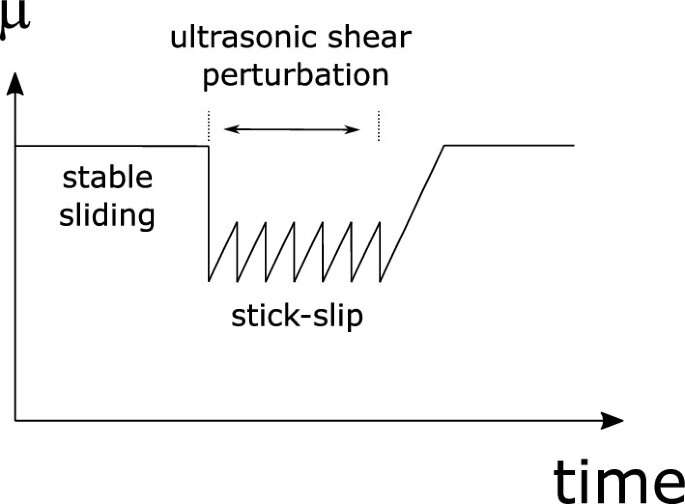This article has been reviewed according to Science X's editorial process and policies. Editors have highlighted the following attributes while ensuring the content's credibility:
fact-checked
peer-reviewed publication
trusted source
proofread
Shear ultrasound shaking found to lower friction between solids

When high-frequency shaking occurs at an interface between two solids, recent experiments have revealed that the frictional forces between the objects can be weakened. Through a simple new experiment detailed in The European Physical Journal E, Julien Léopoldès at Université Gustave Eiffel, Marne la Vallée (formerly at ESPCI Paris) has discovered that mechanical vibrations also enhance structural aging in these systems, and can sometimes trigger sudden, jerking motions.
The results could lead to a better understanding of how buildings are weakened by ambient vibrations, and may also help geologists to draw new insights into the mechanisms responsible for triggering earthquakes and landslides.
Elastic waves due to human activity and earthquakes can be found ambiently in the environment and are known to induce fracture. To learn more about their influence, Léopoldès constructed an experiment involving a plastic slider with a roughened surface. Using a spring, the slider was driven over a smooth glass slide at a carefully controlled velocity—ranging between 1 nanometer and 1 centimeter per second. The glass slide was itself attached to an ultrasound transducer—which produced shear vibrations, parallel to its interface with the slider.
In his experiment, Léopoldès measured the frictional forces experienced by the plastic slider as he varied the velocities applied by the spring. As he predicted, the high frequency shaking lowered the friction experienced by the slider—but at lower sliding velocities, he also found that the vibrations were enough to destabilize the entire system. In these jerky "stick-slip" motions, the slider remained static at first, but then moved suddenly as its stored energy was all released at once.
These discoveries could deepen our understanding of how the interfaces at the contact between solids are affected by traveling waves, and may also have important applications in fields including geology and structural engineering.
More information: J. Léopoldès, Sliding friction perturbed by shear ultrasound vibrations: dynamic lubrication and overaging, The European Physical Journal E (2022). DOI: 10.1140/epje/s10189-022-00256-5
Journal information: European Physical Journal E
Provided by Springer




















